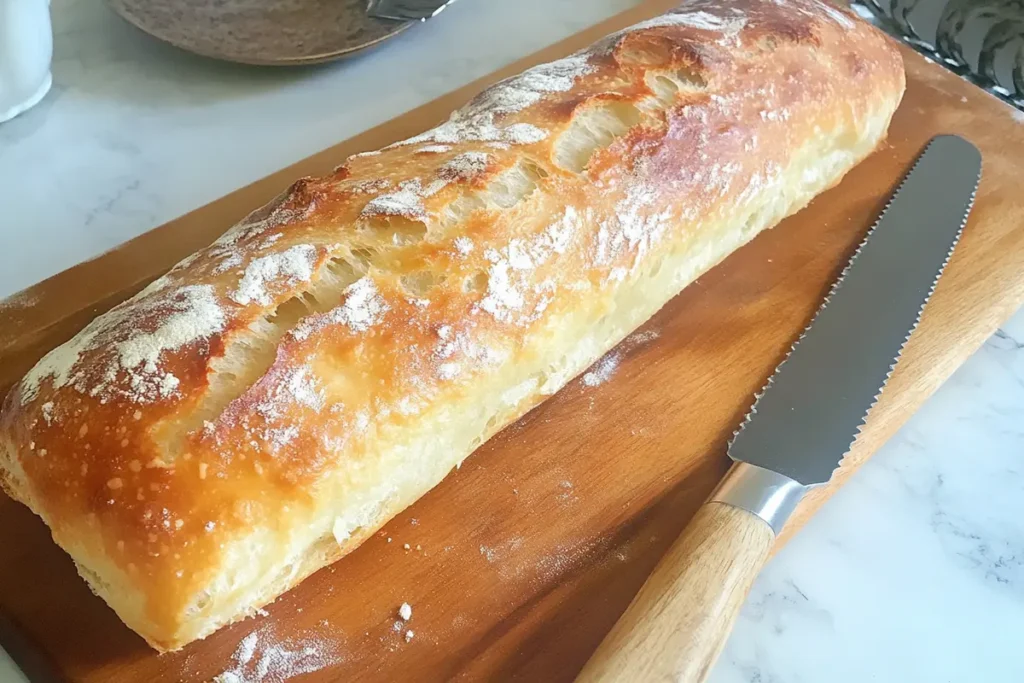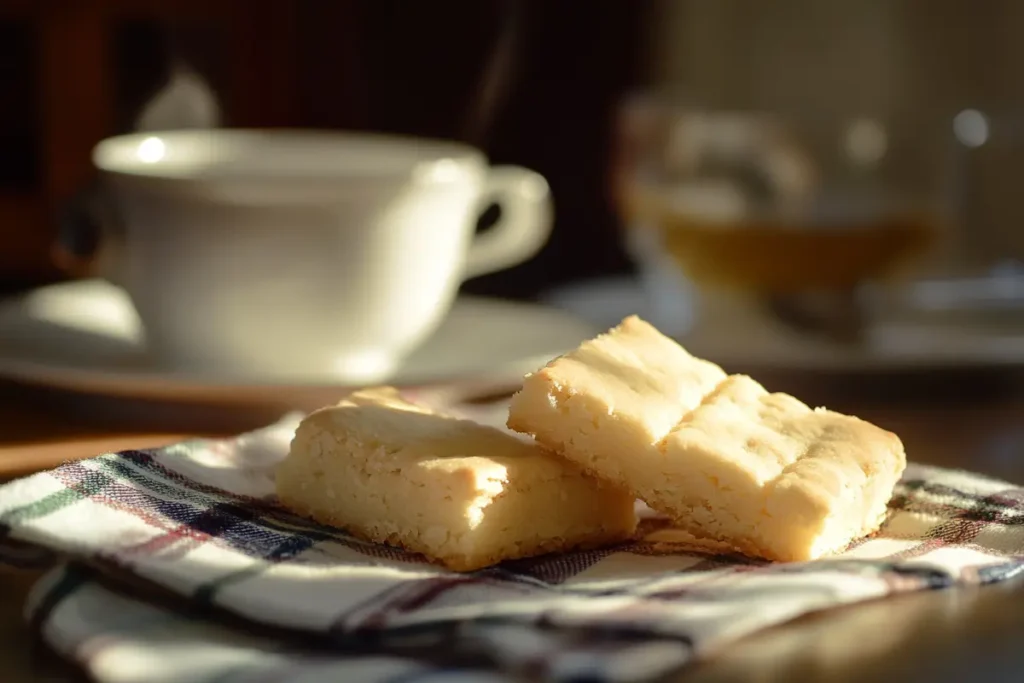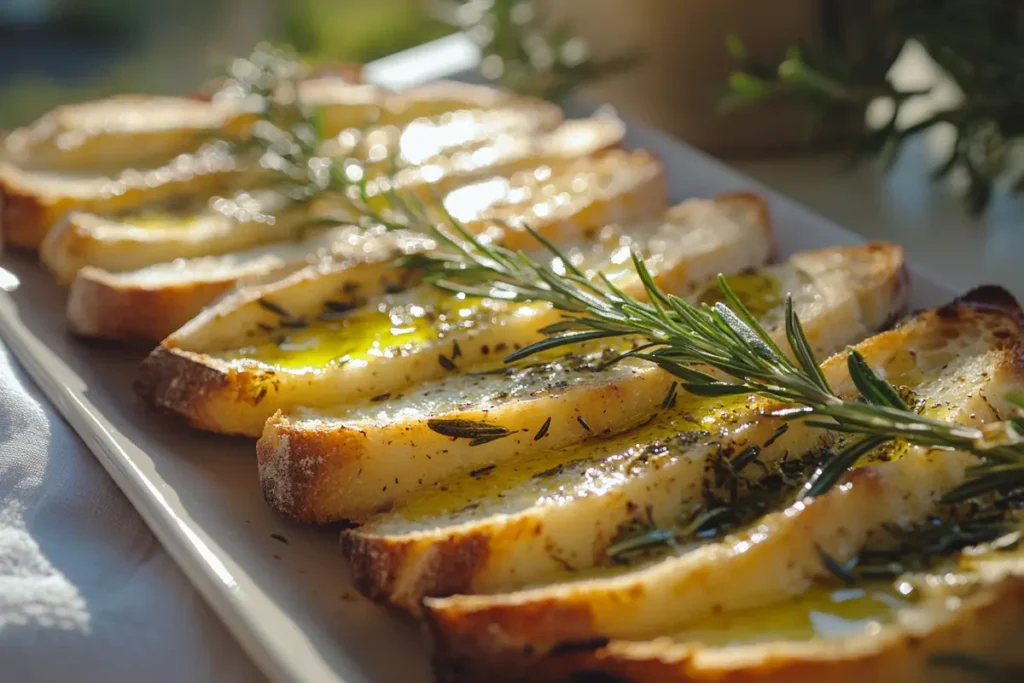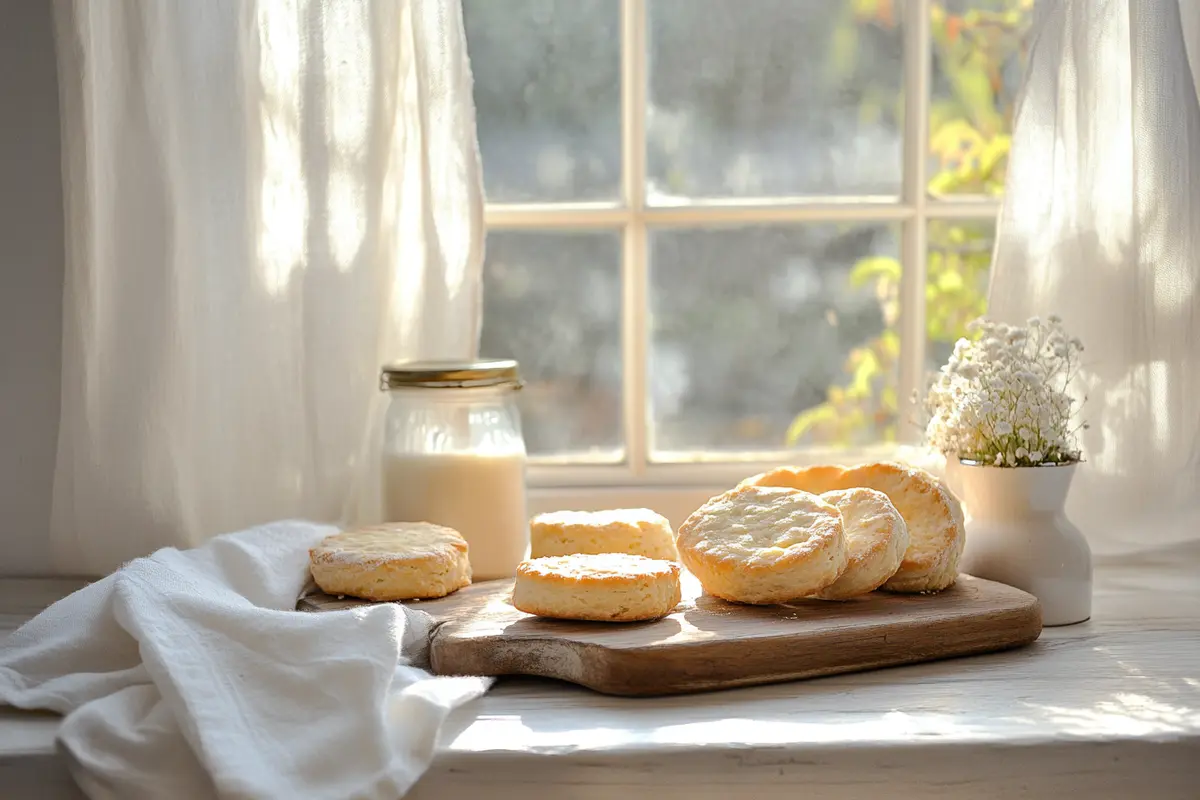Understanding Shortbread and Long Bread
Definition of Shortbread
Shortbread and long bread may both fall under the category of baked goods, but their differences couldn’t be more striking. Shortbread is a rich, crumbly biscuit originating from Scotland, prized for its simplicity and high butter content, while long bread refers to rustic, elongated loaves with a chewy crumb and crisp crust. These contrasting treats highlight the difference between shortbread and long bread, not just in ingredients but also in texture and baking traditions.
Definition of Long Bread

Long bread is less of a technical term and more of a description for certain elongated loaves or artisanal breads with a distinct shape. These include baguettes, sourdough batards, and ciabatta. Unlike the crumbly nature of shortbread, long bread is characterized by its stretchiness due to the hydration levels and kneading techniques used. The term can also describe breads with a longer fermentation process, resulting in complex flavors.
While there are many varieties, these breads typically have a more chewy crumb and a crispy or rustic crust. You’ll often see long breads served with savory toppings like olive oil, butter, or fresh herbs.
Historical Background
Origins of Shortbread

Shortbread’s history is deeply intertwined with Scottish tradition, tracing back to medieval times. This humble yet luxurious biscuit began as a way to repurpose leftover bread dough. Over time, the yeast in the dough was replaced with butter, making it richer and more decadent. By the 16th century, shortbread had evolved into a staple associated with celebrations and special occasions—especially in aristocratic households.
The simplicity of its three main ingredients—flour, sugar, and butter—meant that bakers could focus on quality rather than complexity. In Scottish culture, shortbread became a symbol of hospitality and prosperity, often baked for holidays like Hogmanay (Scottish New Year) and weddings.
Early Beginnings in Scotland
In medieval Scotland, early versions of shortbread were known as “biscuit bread.” They were typically made from hardened bread dough that was baked twice for preservation. However, it wasn’t until Queen Mary of Scots popularized the treat in the 16th century that shortbread as we know it today gained prestige. Her fondness for the buttery biscuit, especially those shaped into petticoat tails, helped solidify its association with royalty and festivity.
During this time, shortbread wasn’t an everyday snack—it was a rare indulgence due to the cost of butter and sugar. Consequently, it was reserved for celebrations like weddings and christenings, often shaped into decorative rounds and scored to form triangular slices.
Evolution Over Centuries
By the 18th and 19th centuries, shortbread recipes spread across Britain and beyond. Scottish bakers refined the traditional recipe, sometimes adding unique twists such as caraway seeds or citrus zest. As trade expanded, so did access to different flours and sugars, which allowed for subtle variations.
The industrial era made shortbread more accessible, thanks to advancements in baking techniques and ingredient availability. Yet, despite modernization, the heart of shortbread remained unchanged: a rich, crumbly treat cherished for its simplicity. Even today, authentic Scottish shortbread remains synonymous with quality, often packaged in tartan tins as a nod to its heritage.
Origins of Long Bread
While “long bread” isn’t a technical culinary term, the elongated breads it describes—like the baguette and sourdough batard—have fascinating origins rooted in artisan bread-making traditions. Long breads are often associated with countries like France and Italy, where baking is considered both an art and a science.
Unlike shortbread’s rich crumb, long breads emphasize stretch and chew, reflecting their focus on fermentation and dough development. Let’s look at how these breads took shape over time in this long bread guide.
Historical Context
Long bread dates back to ancient civilizations. Egyptian tombs reveal depictions of elongated loaves, and Roman records mention various types of bread with different textures and shapes. However, it was in 18th-century France that the modern long loaf became iconic. Bakers in Paris began shaping bread into longer forms for practicality—it was easier to slice and share.
The baguette, one of the most famous long breads, was officially recognized in the early 20th century. Its length and thinness were not only visually distinct but also helped it bake quickly. Other cultures followed suit with their own versions, such as Italy’s ciabatta and Germany’s bauernbrot (farmer’s bread).
Development Through Time
As long breads gained popularity, baking methods evolved to enhance their texture. Steam-injected ovens were introduced to create the crispy crust that is now synonymous with baguettes and other long loaves. Bakers also experimented with different types of flour and longer fermentation times to develop deeper, more complex flavors.
In more recent decades, the artisanal bread movement has revived traditional techniques, emphasizing sourdough starters, hydration ratios, and hand-kneading over mass production. Today, long breads are enjoyed worldwide, often paired with soups, spreads, and even as the perfect base for sandwiches. Their versatility and simple elegance have made them timeless.
Ingredients and Preparation
Shortbread Composition
Nutritional Information of Shortbread (Per 100g)
| Nutrient | Amount (per 100g) |
|---|---|
| Calories | 500 kcal |
| Total Fat | 30 g |
| Saturated Fat | 18 g |
| Carbohydrates | 55 g |
| Sugars | 20 g |
| Protein | 5 g |
| Sodium | 200 mg |
Shortbread’s reputation as a luxurious treat comes from its simple but indulgent ingredient list. Unlike most cookies or biscuits, shortbread relies heavily on the ratio of butter to flour, giving it that rich, crumbly texture. Though variations exist, traditional shortbread keeps it minimalistic, showcasing the buttery flavor rather than masking it with too many additives.
Key Ingredients
Shortbread’s magic lies in its “three-ingredient rule”: butter, flour, and sugar. However, the proportions make all the difference:
- Butter: The backbone of shortbread, butter gives the biscuit its tender, melt-in-your-mouth texture. High-fat European-style butter is often recommended for its creaminess and lower water content.
- Flour: Plain flour is used, with some recipes calling for a small percentage of rice flour or cornstarch to enhance the crumbliness without making the dough too heavy.
- Sugar: Granulated or caster sugar provides a subtle sweetness. Some bakers also add powdered sugar for a smoother texture.
Many recipes include a pinch of salt to balance the sweetness. Occasionally, bakers might experiment with vanilla extract or lemon zest, but traditionalists stick to the basics to let the butter’s richness shine.
Traditional Preparation Methods
The preparation process for shortbread is straightforward, yet precision is key to achieving the ideal texture. Here’s how it’s typically done:
- Creaming the Butter and Sugar: The butter is creamed with sugar until pale and fluffy, ensuring even distribution throughout the dough. However, overmixing can lead to a tough texture, so this step requires careful timing.
- Incorporating Flour: Flour is folded in gently until the dough just comes together. The goal is to avoid activating too much gluten, which would create a chewy structure instead of a crumbly one.
- Shaping and Baking: Once the dough is ready, it’s rolled out and cut into rounds, rectangles, or traditional wedge-shaped “petticoat tails.” The dough is pricked with a fork to allow steam to escape and maintain the biscuit’s shape during baking.
The dough is often chilled before baking to prevent spreading and ensure a crisp finish. Baking is done at a low temperature to avoid browning too much—shortbread is prized for its pale, golden color rather than a deep brown.
Long Bread Composition
Nutritional Information Of Long Bread (Per 100g)
| Nutrient | Amount (per 100g) |
|---|---|
| Calories | 265 kcal |
| Total Fat | 1.5 g |
| Saturated Fat | 0.3 g |
| Carbohydrates | 56 g |
| Sugars | 2 g |
| Protein | 9 g |
| Sodium | 500 mg |
Long bread, in its many forms—whether it’s a baguette, ciabatta, or another rustic loaf—belongs to a family of long bread varieties.—shares common elements that distinguish it from softer or sweeter breads. The defining features of long bread lie in its minimalistic approach and reliance on time rather than additional ingredients to develop flavor and texture.
Essential Ingredients
Despite the diversity in types of long bread, the core ingredients remain the same:
- Flour: Bread flour with a higher protein content is typically used to achieve the strong gluten network necessary for that chewy texture. For specialty breads like sourdough, a mix of flours (like whole wheat or rye) may be added.
- Water: Water is key to hydrating the flour and forming the dough. In higher-hydration breads like ciabatta, the dough can be almost batter-like, contributing to its signature airy structure.
- Yeast or Starter: Yeast is the primary leavening agent in most long breads. Some, like sourdough, use a natural starter—a mixture of flour and water that ferments over time—to provide leavening and a tangy flavor.
- Salt: Essential for flavor and gluten structure, salt is added after the initial hydration phase to prevent it from inhibiting yeast activity during the first steps of mixing.
Unlike sweet breads, long breads rarely contain sugar, oils, or enrichments. Instead, the flavor comes from fermentation, which develops over time.
Standard Baking Techniques
The preparation of long bread involves a balance of fermentation, shaping, and baking techniques to achieve its characteristic crust and crumb:
- Mixing and Autolyse: After initial mixing, the dough rests (a process known as autolyse), allowing the flour to fully hydrate and the gluten to begin forming without over-kneading.
- Kneading and Folding: The dough is stretched and folded at intervals rather than kneaded continuously. This technique builds structure without overworking the dough.
- Fermentation and Shaping: Long fermentation (often several hours or even overnight) allows the dough to develop a deep flavor. Once proofed, the dough is shaped into elongated loaves or batons.
- Scoring and Baking: Before baking, the loaves are scored (cut with a sharp blade) to control how they expand during baking. Long breads are often baked in steam-injected ovens to create a crispy, golden crust and a moist interior.
The result? A bread with a crisp exterior and a tender, airy crumb—a perfect balance of rustic simplicity and refined technique.
Differences in Texture and Flavor
Texture Comparison
Shortbread and long bread are worlds apart when it comes to texture. Shortbread’s crumbly delicacy offers a tender bite that melts in your mouth, while long bread is prized for its chewy, structured crumb and crusty exterior. The contrast stems from how their ingredients interact and the techniques used during preparation.
Crumbliness of Shortbread
Shortbread’s defining texture is its “short” structure, created by the high butter-to-flour ratio. When baked, the lack of water and gluten development results in a soft, brittle biscuit that crumbles easily when broken or bitten. Rice flour or cornstarch, sometimes added to enhance this effect, creates an even more sand-like consistency. Unlike cookies, which have a chewy or cakey middle, shortbread remains uniformly tender throughout.
It’s important to note that over-mixing the dough can toughen the shortbread. For that perfect melt-in-your-mouth feel, the dough is gently handled and chilled to maintain its crumbly charm.
Crust and Crumb of Long Bread
Long bread boasts a distinct contrast between its crust and crumb. The crust is often thick and crispy, achieved by baking in a high-temperature oven with added steam. This moisture in the oven helps form a caramelized, crackling exterior that’s almost addictive to bite into.
Meanwhile, the inside—or crumb—varies based on hydration levels. Baguettes, for example, have an airy, open crumb with large holes, while sourdough has a tighter, chewier structure. This chewy crumb is due to gluten development during kneading and stretching, making the dough elastic rather than brittle. As a result, long bread feels sturdy and satisfying with every chew, making it perfect for dipping into soups or spreading with toppings.
Flavor Profiles

Shortbread and long bread also diverge when it comes to flavor. One is rich and indulgent, while the other leans toward hearty, savory notes. These profiles make them versatile for different occasions and pairings.
Buttery Sweetness of Shortbread
Shortbread is beloved for its buttery richness and subtle sweetness. Since butter is the star ingredient, the flavor largely depends on its quality—high-fat butter gives a more pronounced creaminess. The sugar adds a soft sweetness without overpowering the natural richness of the butter.
While traditional shortbread sticks to the basics, modern variations may include additions like vanilla, citrus zest, or chocolate. Despite these changes, the essence of shortbread remains simple and indulgent. It’s often described as the perfect tea-time treat or dessert base for layered bars due to its mellow, buttery undertone.
Savory Notes of Long Bread
Long bread, on the other hand, has a more neutral, savory flavor, thanks to its minimal ingredients—flour, water, yeast, and salt. The extended fermentation process, especially in sourdough, brings out deeper, tangy notes from the natural fermentation. This complexity makes long bread a great companion for both sweet and savory spreads.
Different types of long bread also have unique flavor profiles. Baguettes, for example, have a mild, slightly nutty taste due to the caramelized crust, while ciabatta has a faintly yeasty tang. Some long breads develop earthy, toasty undertones when baked at high temperatures, making them a flavorful base for sandwiches or bruschetta.
Frequently Asked Questions
What is the origin of shortbread?
Shortbread originated in medieval Scotland and became popular during the 16th century, thanks to Queen Mary of Scots, who loved its buttery, crumbly texture.
How is long bread different from other bread types?
Long bread refers to elongated loaves, like baguettes, that have a crisp crust and a chewy interior. It differs from softer breads like brioche due to its simple ingredients and longer fermentation process.
Can shortbread be made with alternative ingredients?
Yes! While traditional shortbread uses wheat flour and butter, you can make gluten-free versions with almond or rice flour. Vegan versions often swap butter for plant-based alternatives.
What occasions are best for serving shortbread?
Shortbread is a popular treat during holidays like Christmas and Hogmanay (Scottish New Year), much like other dessert comparisons that highlight their cultural roots.It’s also commonly served at tea parties or as a homemade gift.
Conclusion Of Differences Between Shortbread and Long Bread
Shortbread and long bread, though made from humble ingredients, serve vastly different culinary purposes. Shortbread’s crumbly, buttery texture and rich sweetness make it a beloved biscuit perfect for indulgent snacking or pairing with tea. Meanwhile, long bread’s chewy crumb and crispy crust lend themselves to hearty meals and versatile sandwiches.
Whether you’re savoring the simplicity of traditional shortbread or enjoying a freshly baked baguette with olive oil, each has its own unique place in the world of baked goods. Understanding their differences not only enhances your appreciation but also helps you choose the perfect treat for any occasion!
Ready to bake or curious to learn more? Explore different recipes, try new flavor pairings, and enjoy the delicious diversity of baked creations!

